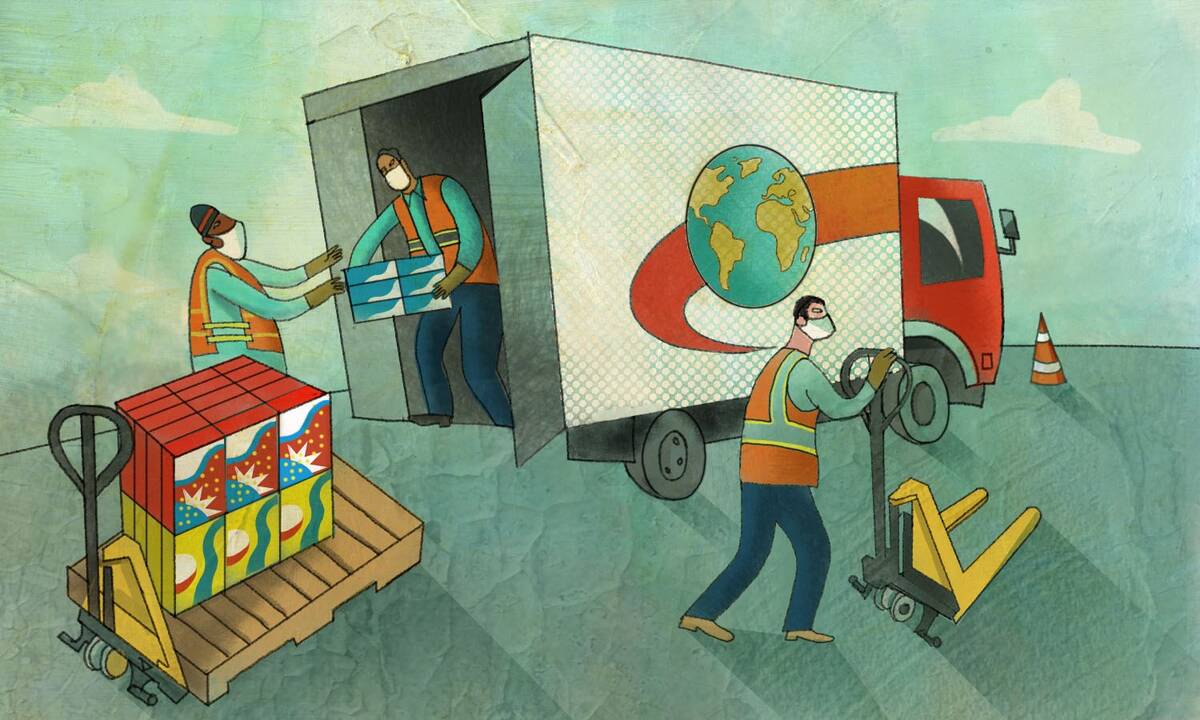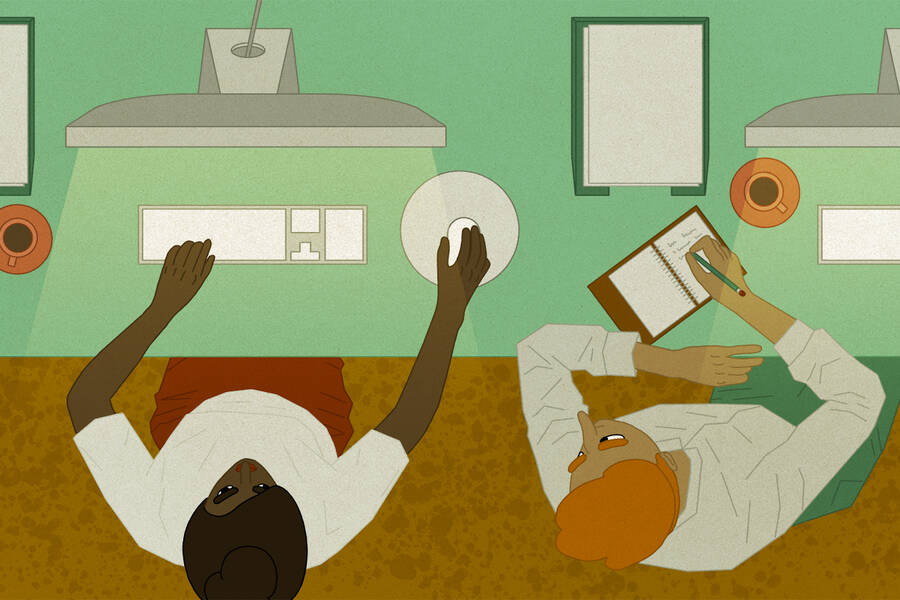But there’s another area of disagreement that gets less attention: how raising the minimum wage might affect worker productivity.
“The average person would imagine once wages go up, including the minimum wage, workers would become more attached to their employer and they might become more productive because they are more interested in keeping their job,” says Nicola Persico, Kellogg professor of managerial economics and decision sciences. That could be a win for employees and employers alike.
The problem is that economists don’t know much about the impacts of a higher wage on productivity. There simply hasn’t been much research on the question, in part due to lack of relevant data.
“There’s very limited evidence on the effect of minimum wage on individual employees,” says Erika Deserranno, associate professor of managerial economics and decision sciences at Kellogg. “A lot of the research is on broad trends like whether the minimum wage results in more people being employed, but there is very little on what actually happens to those employees. Do they work more? Do they work less?”
In order to explore this question, the Kellogg researchers, along with collaborator Decio Coviello at HEC Montreal, were able to secure a massive dataset for worker productivity from a major U.S. retailer. Importantly, the retailer has stores in areas both with and without higher mandated minimum wages, allowing the researchers to compare worker productivity between stores.
The study finds that while a higher wage improved individual-worker productivity overall, the effect wasn’t spread evenly across workers or locations. Additionally, store profits tended to go down with a higher wage.
Still, the researchers suggest a higher wage is worth considering. “It partially pays for itself because you get workers who are more productive and more attached to the firm,” Deserranno says.
A Natural Experiment
To study the impact of a higher minimum wage on productivity, the researchers took advantage of the fact that different cities, counties, and states implemented different minimum-wage laws at different times. That makes it possible to compare productivity in stores on one side of the jurisdictional border with productivity in stores on the other side.
“We are able to compare these two stores that are very close geographically and therefore presumably similar in all respects, except the change of minimum wage,” Persico says. “It provides a natural experiment.”
The major U.S. retailer they study operates over 2,000 stores in all 50 states, employing over 40,000 salespeople. They analyzed data from February 2012 to June 2015, during which time there more than 70 minimum-wage increases at state and local levels. The researchers were interested in how individual-worker productivity, as measured by the value of sales they made, changed between locations.
Importantly, the workers studied weren’t paid a set wage, but one based partly on performance. They earned a base rate of pay that varied by location, averaging $6.12/hour across stores, with commission-based compensation on top of that to incentivize productivity, such as for upselling to higher-margin products or selling product warranties and other optional items. In other words, while earnings varied by worker based on performance, all workers in a given area had to earn at least the minimum rate for that area. For the company, this meant that it had to “top off” the weekly compensation of any workers whose pay fell below that minimum threshold.
This could conceivably have a couple very different effects on workers. “If you’re a worker who’s not that good at selling, the higher minimum wage may actually incentivize you to work less, because you’re going to be topped up to a certain level no matter what,” Deserranno says.
At the same time, higher guaranteed compensation could make workers more attached to their jobs, especially if employment options outside their current workplace are limited. “The increased wage can provide a kind of insurance for workers about compensation, and if they lose that job, they lose that insurance,” Deserranno says. “So maybe they are more productive now because they don’t want to get fired. That makes them more attached to the employer.”
The researchers analyzed productivity, along with other data from the retailer, such store profits, the number of supervisors in the store, and turnover of employees.
Greater Productivity, But . . .
Broadly, the study found that a higher minimum wage led to greater productivity. “Employees work harder per hour,” Persico says. “They sell more goods”—about 4.5 percent more across all workers.
And importantly, this boost in sales really did seem to be in response to an uptick in employee effort. The researchers were able to use satellite photos of parking lots to determine that stores saw no additional traffic after the minimum-wage boost, suggesting that an increase in local demand was not responsible.
But the takeaways for companies and policymakers aren’t simple.
First, the effects were driven largely by lower-performance workers, whose productivity increased. “We didn’t see much happening for workers who were already well above minimum wage [due to their commissions],” Deserranno says. For example, while a $1 increase in minimum wage improved low performers’ productivity by 22.6 percent, it had no observable effect on high performers.
Moreover, the link between wage and productivity is observed only in stores with more supervisors to monitor employees. In the presence of a higher minimum wage, high monitoring led to 6.6 percent more productivity across workers, while low monitoring led to a 9.4 percent decrease in productivity.
“If you’re in a store where there is very little monitoring and where low effort doesn’t necessarily cause you to be fired, a higher minimum wage actually reduces productivity,” Deserranno says. After all, why hustle if nobody’s watching and you’re guaranteed a certain amount of pay? “But in stores where you can get caught, people work harder because they don’t want to lose the job.”
Another twist is that increased productivity doesn’t necessarily mean greater profits, especially in the short term. Across stores, a $1 increase in the minimum wage decreased profits per hour by 16 percent. That helps explain why many businesses are reluctant to increase wages—they believe, justifiably, it will erode their margins.
Still, the researchers argue that higher minimum compensation likely drives some longer-term economic benefits for businesses. Specifically, they found higher wages lead to lower turnover for lower-performing employees, with 19 percent fewer terminations in that group.
“Reduced turnover is a good thing because departure of employees at any performance level has a cost for businesses,” Persico says. The study didn’t estimate the potential value of reduced turnover, so it’s hard to say whether it’s sufficient to offset the lower profits, but that remains a possibility.
A Policy Worth Considering
So how should employers and policymakers interpret these findings?
In some situations—particularly when the long-term value of retention offsets any loss of profit from the higher wage—a higher minimum wage can be a boon for workers and companies.
“Raising minimum wage is a cost for businesses, but it works well as long as outside employment options aren’t great and if there’s good monitoring of workers within the firm,” Deserranno says. “Productivity goes up and departures go down.”
Persico adds, “A higher minimum wage creates greater attachment of workers to employers, more stickiness. That’s good from a policy level because in the United States, when people lose their jobs, they also often lose their health benefits, which creates other costs for individuals and society. So you want to keep them in their jobs.”
In the future, the researchers hope to continue their investigation into employee productivity by collaborating with more companies.
“We can do lots of things with this kind of data, including measuring what makes a worker more productive or what makes managers more effective. We have lots of statistical methods for doing that and invite companies with HR data to share to come to us for this kind of collaboration. The business insights can be very valuable.”




